9 Ideas That Made $100 Million
Article by Michelle Fox
provided by

Chances are, just about anyone you talk to will have an idea for a business with the hopes that one day it will help them make millions. Although business ideas may be easy to come by, turning those ideas into huge successes is an entirely different ballgame. However, many entrepreneurs with simple ideas and humble beginnings have been able to effectively turn those ideas into booming businesses.
Sara Blakely, Spanx
One night, Sara Blakely cut off the bottom off her pantyhose and the idea of Spanx was born. Armed with $5,000 in savings, Blakely researched and wrote her patent for footless pantyhose and drove around North Carolina begging mill owners to make her product. Most told her it would never sell, but one owner decided to take a chance and help her make her "crazy idea."
In 2000, her prototype was perfected and she started hitting up high-end department store buyers. In the first three months, she sold more than 50,000 pairs from the back of her apartment. Now that "crazy idea" has Blakely soaring. Spanx has grown to include a full range of body-slimming undergarments, bathing suits and active wear. Retail sales were an estimated $350 million in 2008, the last time the company released figures.
Brian Scudamore, 1-800-GOT-JUNK
In 1989, Brian Scudamore was waiting in line at a McDonald's drive-through when a local hauling company's old pickup truck caught his eye. Inspiration struck and Scudamore bought a used pickup truck for $700 and started The Rubbish Boys. He began by picking up junk in between his classes at the University of British Columbia, but what started as a way to pay for college soon turned into a unique business.
In 1993, he dropped out of school to focus full-time on the company. In 1998, he changed the name to 1-800-GOT-JUNK and a year later the first franchise opened in Canada. Now there are locations all over North America and Australia. The company hit more than $100 million in system-wide revenues in 2007 and 2008, and its goal for 2010 is $105 million.
Jennifer Telfer, Pillow Pets
The idea for Pillow Pets dawned on Jennifer Telfer after watching her young sons smash down their stuffed animals in order to sleep on them like a pillow. So she set about creating stuffed animals that unfolded into plush pillows.
Telfer and her husband, Clint, decided to wholesale the products themselves in 2003 through their company, CJ Products. She began by hawking them at a mall kiosk during the holiday season, and then at a home show two weeks after Christmas. When the products nearly sold out, Telfer realized she was onto something. The cuddly toy has since exploded into the marketplace, bringing in $300 million in sales in 2010.
Bert and John Jacobs, Life is good
Bert and John Jacobs designed their first T-shirts in 1989 and hawked them on the streets of Boston and at colleges along the East Coast. But for five years, success eluded them. Then, in 1994, they struck upon the idea to use a design of a cartoon figure called Jake and the motto "Life is good."
People seemed to embrace the simple message of optimism--the shirts were a hit at a local street fair and retailers soon became interested. Now, Jake's face and motto are on more than just shirts. You can find him and other characters smiling on products from towels and totes to coffee mugs and dog leashes. And life sure is good now for Bert and John Jacobs. Business is booming, with 2010 sales coming in at about $100 million.
Steve Ells, Chipotle
Steve Ells was working as a chef in San Francisco when he decided he wanted to open his own restaurant. Ells found his inspiration in an unusual place--the little taco shops he used frequent in the city. He decided to take that idea and make a burrito restaurant that was different from a typical fast-food experience.
Ells wanted a place where customers could eat food made of the finest ingredients quickly and affordably. After borrowing money from his parents, he opened his first Chipotle in Denver in 1993. It was so successful that Ells abandoned his /;real dream" of opening a full-scale restaurant. Now, more than 1,000 restaurants later, Chipotle is raking in the bucks. The company reported $509.4 million in revenue for the first quarter of 2011 alone.
Adam Lowry and Eric Ryan, Method
The idea for an environmentally friendly household cleaner came to Adam Lowry and Eric Ryan when they were roommates in their San Francisco apartment. They noticed that when it came time to clean up from their house parties, the products they used would make them cough. The situation made them wonder whether the products they were using were dirtier than the mess they were trying to clean.
At the time, there weren't many choices when it came to cleaning products that didn't contain harsh chemicals. So, Lowry and Ryan did some research and launched Method, an eco-friendly line of home-care products in 2000. Ten years later, the products are on store shelves across the country and the company has gross revenues north of $100 million.
Roxanne Quimby and Burt Shavitz, Burt's Bees
Burt Shavitz was selling honey off the back of his pickup truck and Roxanne Quimby was an out-of-work waitress trying to make a living at flea markets and yard sales when the two met in 1984. They teamed up to make candles from beeswax to sell at craft fairs and soon expanded to stores.
Things really took off when Quimby found a 19th century book of homemade personal-care recipes. They soon started cooking up natural soaps and perfumes on gas stoves. But their best-selling idea came in the form of lip balm, which they added to the product line in 1991. Burt's Bees now sells more than 100 skin and hair-care items, but it has quit making the candles that got the business started. The company's sales topped $250 million in 2007, and Clorox ponied up $925 million to by the company at the end of that year.
Jim McCann, 1-800-FLOWERS.COM
Jim McCann was a bartender and a social worker who was looking for a way to supplement his income when he bought a flower shop for $10,000 in 1976. He eventually opened 13 more stores in the New York Metropolitan area, but it wasn't until he hit upon the idea to acquire the 1-800-FLOWERS phone number in 1986 that business really bloomed.
The company was the first to put an 800-telephone number in its name, and McCann's marketing idea paid off. He also made sure technology didn't leave him behind, seizing the Internet opportunity as early as 1991. In 1999, 1-800-FLOWERS went public and added the dot-com to its name. The company, which has also expanded by acquiring companies such as The Popcorn Factory and Fannie May, reported almost $668 million in total revenue in fiscal year 2010.
Gary and Diane Heavin, Curves
Gary and Diane Heavin opened their first Curves in 1992 with the idea of targeting women who were not being by served conventional gyms. Their idea was to create a place that would give women a supportive and comfortable atmosphere. The couple also focused on busy women's time constraints with their 30-minute fitness concept.
The fitness club caught on quickly and the business soon expanded. Curves franchised a few years later and now there are nearly 10,000 locations around the globe. System-wide revenue reached about $1 billion in 2010.
| More from CNBC.com: • 10 Ideas That Made $100 Million • CEOs Who Went From Rags to Riches • Million Dollar Homes Across America 2011 |
Chances are, just about anyone you talk to will have an idea for a business with the hopes that one day it will help them make millions. Although business ideas may be easy to come by, turning those ideas into huge successes is an entirely different ballgame. However, many entrepreneurs with simple ideas and humble beginnings have been able to effectively turn those ideas into booming businesses.
Sara Blakely, Spanx
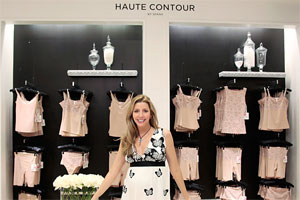 Photo: Joe Kohen |
In 2000, her prototype was perfected and she started hitting up high-end department store buyers. In the first three months, she sold more than 50,000 pairs from the back of her apartment. Now that "crazy idea" has Blakely soaring. Spanx has grown to include a full range of body-slimming undergarments, bathing suits and active wear. Retail sales were an estimated $350 million in 2008, the last time the company released figures.
 1-800-GOT-JUNK |
In 1989, Brian Scudamore was waiting in line at a McDonald's drive-through when a local hauling company's old pickup truck caught his eye. Inspiration struck and Scudamore bought a used pickup truck for $700 and started The Rubbish Boys. He began by picking up junk in between his classes at the University of British Columbia, but what started as a way to pay for college soon turned into a unique business.
In 1993, he dropped out of school to focus full-time on the company. In 1998, he changed the name to 1-800-GOT-JUNK and a year later the first franchise opened in Canada. Now there are locations all over North America and Australia. The company hit more than $100 million in system-wide revenues in 2007 and 2008, and its goal for 2010 is $105 million.
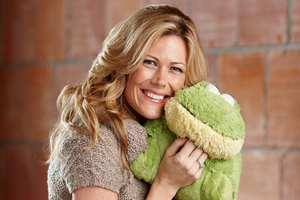 Pillow Pets |
The idea for Pillow Pets dawned on Jennifer Telfer after watching her young sons smash down their stuffed animals in order to sleep on them like a pillow. So she set about creating stuffed animals that unfolded into plush pillows.
Telfer and her husband, Clint, decided to wholesale the products themselves in 2003 through their company, CJ Products. She began by hawking them at a mall kiosk during the holiday season, and then at a home show two weeks after Christmas. When the products nearly sold out, Telfer realized she was onto something. The cuddly toy has since exploded into the marketplace, bringing in $300 million in sales in 2010.
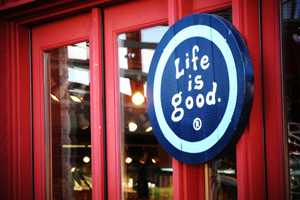 Ivica Pavlesic |
Bert and John Jacobs designed their first T-shirts in 1989 and hawked them on the streets of Boston and at colleges along the East Coast. But for five years, success eluded them. Then, in 1994, they struck upon the idea to use a design of a cartoon figure called Jake and the motto "Life is good."
People seemed to embrace the simple message of optimism--the shirts were a hit at a local street fair and retailers soon became interested. Now, Jake's face and motto are on more than just shirts. You can find him and other characters smiling on products from towels and totes to coffee mugs and dog leashes. And life sure is good now for Bert and John Jacobs. Business is booming, with 2010 sales coming in at about $100 million.
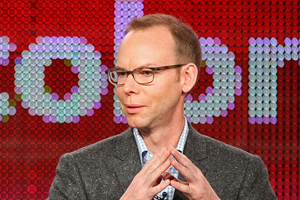 Getty Images |
Steve Ells was working as a chef in San Francisco when he decided he wanted to open his own restaurant. Ells found his inspiration in an unusual place--the little taco shops he used frequent in the city. He decided to take that idea and make a burrito restaurant that was different from a typical fast-food experience.
Ells wanted a place where customers could eat food made of the finest ingredients quickly and affordably. After borrowing money from his parents, he opened his first Chipotle in Denver in 1993. It was so successful that Ells abandoned his /;real dream" of opening a full-scale restaurant. Now, more than 1,000 restaurants later, Chipotle is raking in the bucks. The company reported $509.4 million in revenue for the first quarter of 2011 alone.
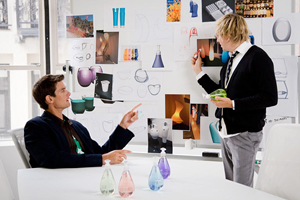 Method |
The idea for an environmentally friendly household cleaner came to Adam Lowry and Eric Ryan when they were roommates in their San Francisco apartment. They noticed that when it came time to clean up from their house parties, the products they used would make them cough. The situation made them wonder whether the products they were using were dirtier than the mess they were trying to clean.
At the time, there weren't many choices when it came to cleaning products that didn't contain harsh chemicals. So, Lowry and Ryan did some research and launched Method, an eco-friendly line of home-care products in 2000. Ten years later, the products are on store shelves across the country and the company has gross revenues north of $100 million.
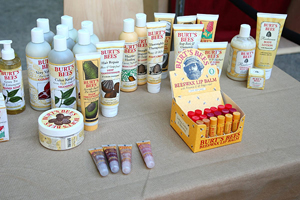 Theo Wargo, WireImage/Getty Images |
Burt Shavitz was selling honey off the back of his pickup truck and Roxanne Quimby was an out-of-work waitress trying to make a living at flea markets and yard sales when the two met in 1984. They teamed up to make candles from beeswax to sell at craft fairs and soon expanded to stores.
Things really took off when Quimby found a 19th century book of homemade personal-care recipes. They soon started cooking up natural soaps and perfumes on gas stoves. But their best-selling idea came in the form of lip balm, which they added to the product line in 1991. Burt's Bees now sells more than 100 skin and hair-care items, but it has quit making the candles that got the business started. The company's sales topped $250 million in 2007, and Clorox ponied up $925 million to by the company at the end of that year.
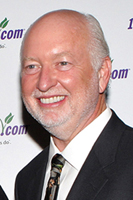 Roger Kisby, Getty Images |
Jim McCann was a bartender and a social worker who was looking for a way to supplement his income when he bought a flower shop for $10,000 in 1976. He eventually opened 13 more stores in the New York Metropolitan area, but it wasn't until he hit upon the idea to acquire the 1-800-FLOWERS phone number in 1986 that business really bloomed.
The company was the first to put an 800-telephone number in its name, and McCann's marketing idea paid off. He also made sure technology didn't leave him behind, seizing the Internet opportunity as early as 1991. In 1999, 1-800-FLOWERS went public and added the dot-com to its name. The company, which has also expanded by acquiring companies such as The Popcorn Factory and Fannie May, reported almost $668 million in total revenue in fiscal year 2010.
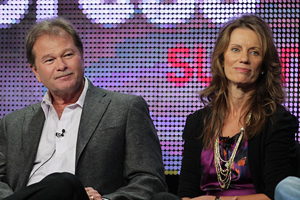 Getty Images |
Gary and Diane Heavin opened their first Curves in 1992 with the idea of targeting women who were not being by served conventional gyms. Their idea was to create a place that would give women a supportive and comfortable atmosphere. The couple also focused on busy women's time constraints with their 30-minute fitness concept.
The fitness club caught on quickly and the business soon expanded. Curves franchised a few years later and now there are nearly 10,000 locations around the globe. System-wide revenue reached about $1 billion in 2010.
*article directly from yahoo.com

No comments:
Post a Comment